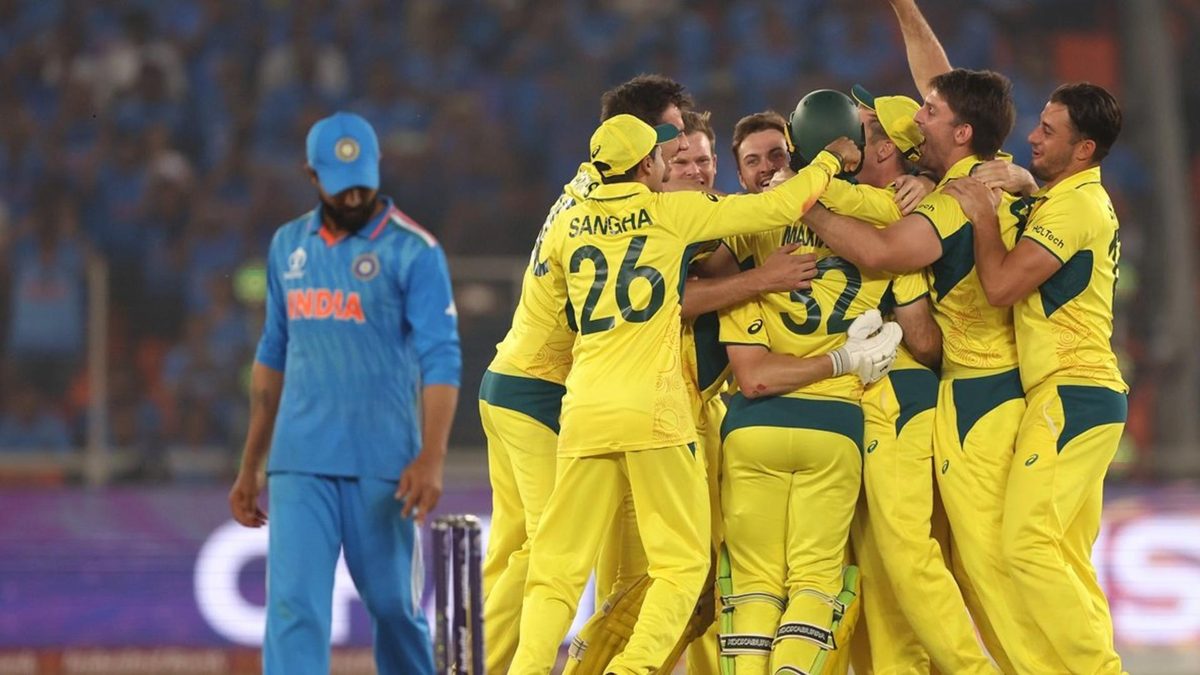
Australia outplayed India in a battle of cricketing skills as well as tactics in the final at Ahmedabad to lift the 2023 World Cup.
To bet on the World Cup with our Match Centre Partners bet365 head here.
Australia won the toss, opted to field, and bowled out India for 240 in the final at the Narendra Modi Stadium. Travis Head then made a magnificent 120-ball 137 as Australia won with six wickets and seven overs in hand to lift their sixth World Cup trophy.
It was a triumph of some outstanding bowling and Head’s exceptional innings as well as Australia’s exceptional work in the boardroom.
Cummins opting to bowl
Despite there being ample evidence of this being a bowl-first pitch, some pundits had written Australia off the moment Pat Cummins won the toss and opted to bowl.
Luck? Perhaps, but then, Rohit Sharma said that he would have batted first as well. Cummins discarded the conservative ‘win the toss, bat first, puts runs on the board in a final’ in favour of the conditions, and while dew was not as big a factor as it might have been, he was able to keep India to a chaseable total.
India’s batting approach
India had probably realised that the pitch would not be to the liking of their batters. Rohit came out all guns blazing in characteristic fashion, but once he fell, Shreyas Iyer followed soon.
This brought Virat Kohli and KL Rahul together. They had joined hands to help India chase 200 in the group match against Australia after India had been 2-3, but this time they were batting blind – with only Suryakumar Yadav and Ravindra Jadeja to follow.
With little option but to dig in as deep as possible, Kohli and Rahul meandered to a 67-run stand in 109 balls for the fourth wicket. While Marnus Labuschagne dropped anchor in similar fashion, Australia had Travis Head to act as the aggressor.
Australia’s bowling changes
As Kohli and Rahul took their time, Cummins made swift bowling changes, often using his bowlers in two-, or even one-over bursts. Mitchell Marsh came on with wicketkeeper Josh Inglis standing up. Glenn Maxwell and Travis Head bowled. The Indian batters had to wait to get adjusted to the pace of the pitch, and couldn’t line up any bowler in a spell.
India promoting Jadeja
When Kohli fell in the 29th over, India held back Surya, their scheduled No.6. The brilliance of their specialists notwithstanding, India had been walking on thin ice at the World Cup since Hardik Pandya’s injury, risking a tail of four batters match after match. It caught up with them in the final.
Surya’s strength lay in his devastating batting, albeit in Twenty20 cricket. To delay his entry as much as possible, India promoted Jadeja at No.6. It was worth trying, but it did not work out, with Jadeja making a 22-ball nine, and Surya unable to get going.
The final spell to ‘SKY’
On a sluggish pitch, the Australian bowlers cut down on pace while bowling short at Surya, who prefers the ball to come on to the bat. To prevent a scoop, there was a short-third as straight a possible – almost a long stop but not quite.
Surya still moved out of the line and attempted a pull for a ball too slow for the shot: it lobbed to Inglis off his glove.
Shami taking the new ball
While he has bowled inside the powerplay, Shami has not opened the bowling in the current World Cup. However, low-scoring ODIs are often determined by early wickets. Not only was Shami the leading wicket-taker of the World Cup but he also averaged a ridiculous four with the ball against Australia in all ODIs.
It took Shami one ball to strike, and India had Australia at 47-3, but that was all India could achieve. Shami struggled to control the movement of a completely new ball, while Mohammed Siraj, deprived of the new ball, was left without a defined role.
Early advent of spinners
Dew was not going to be a significant factor at the final, but even then, India took no chances. Immediately after the powerplay was over, India brought on Jadeja and Kuldeep Yadav in tandem, ensuring they got as many overs as possible out of the way before dew, if any, set in.
Not that it mattered…








